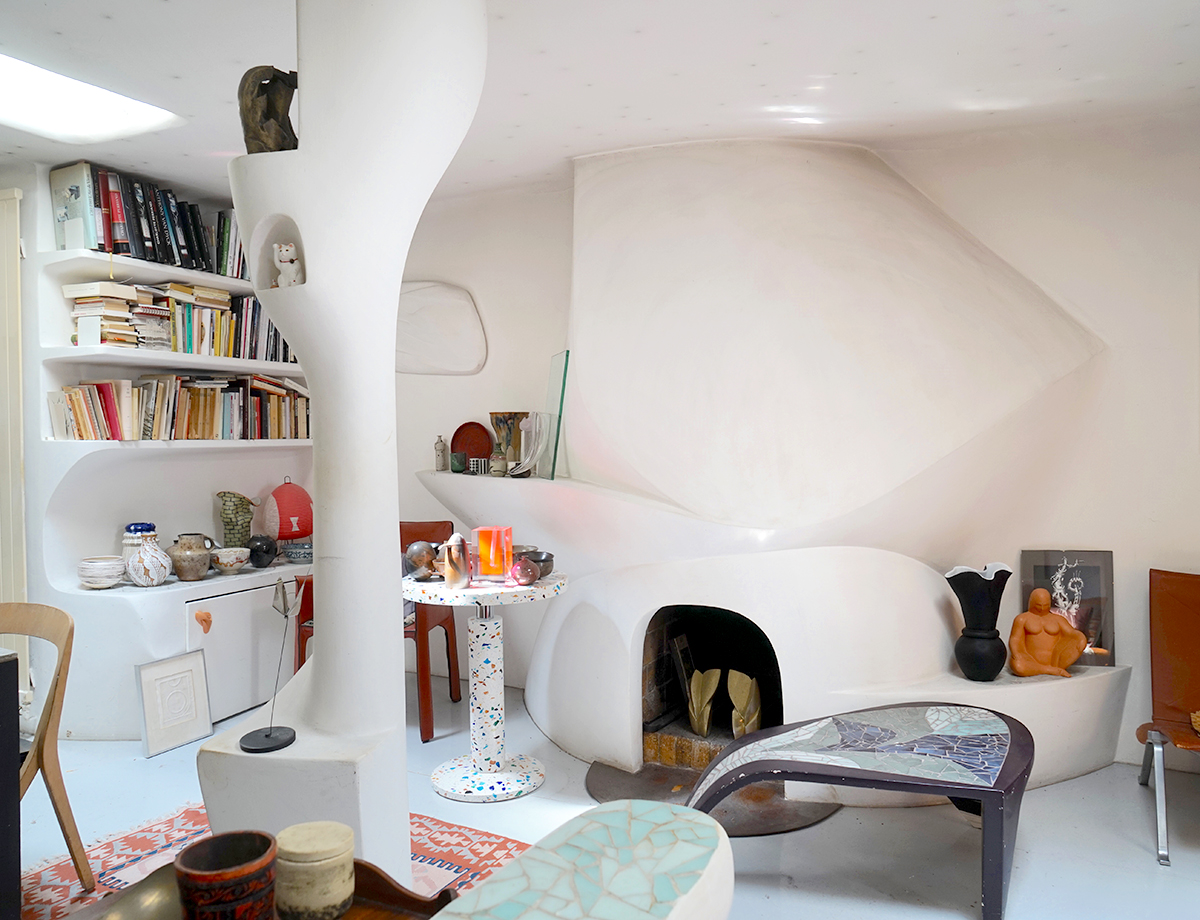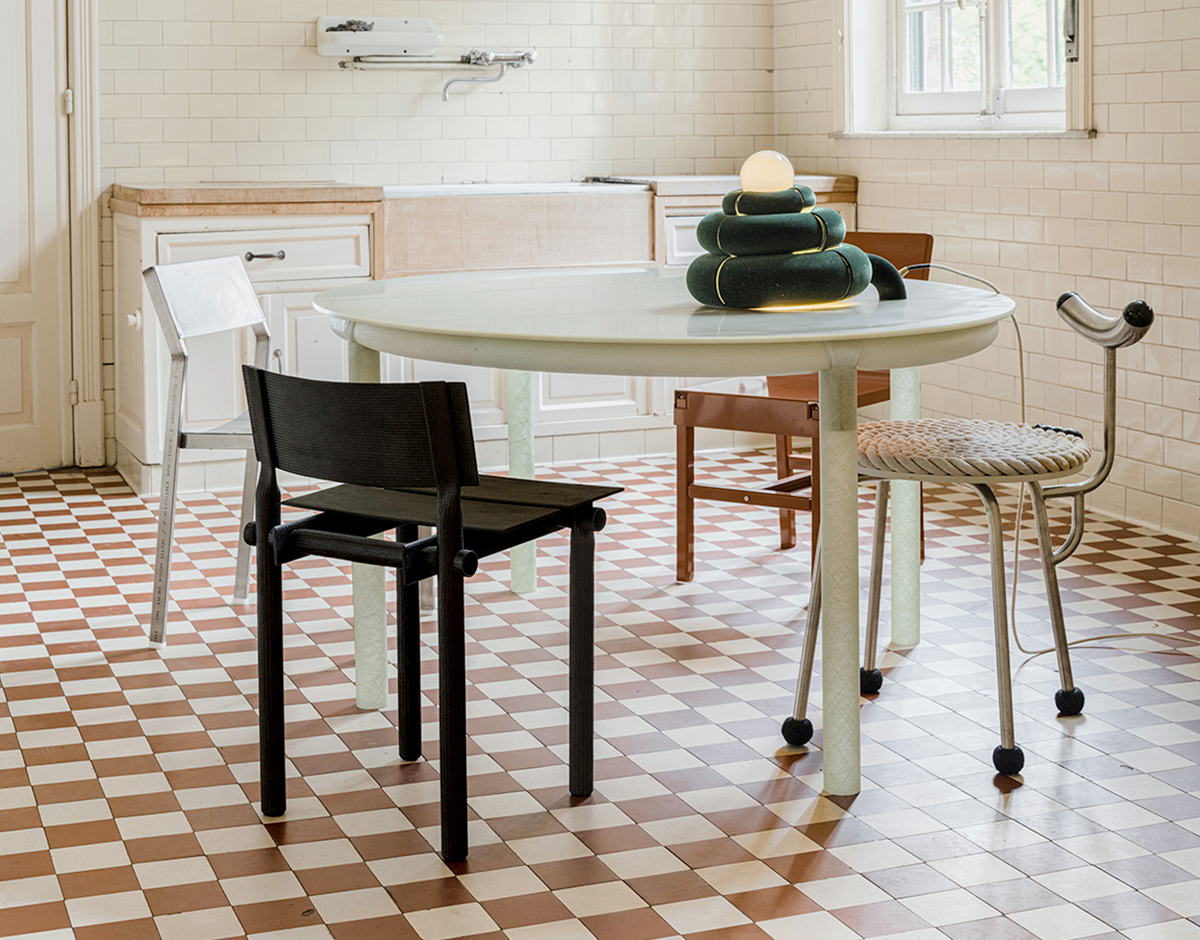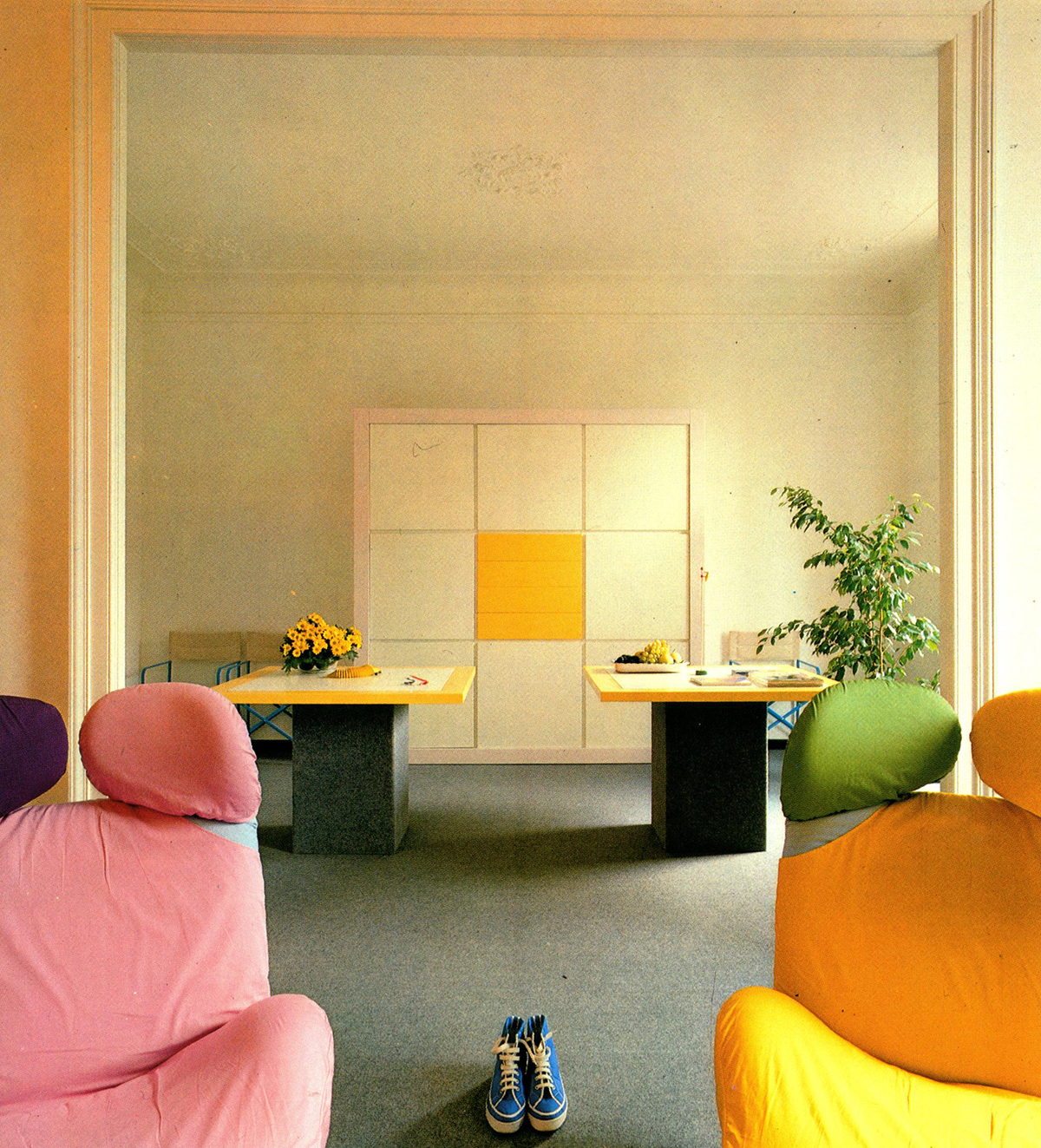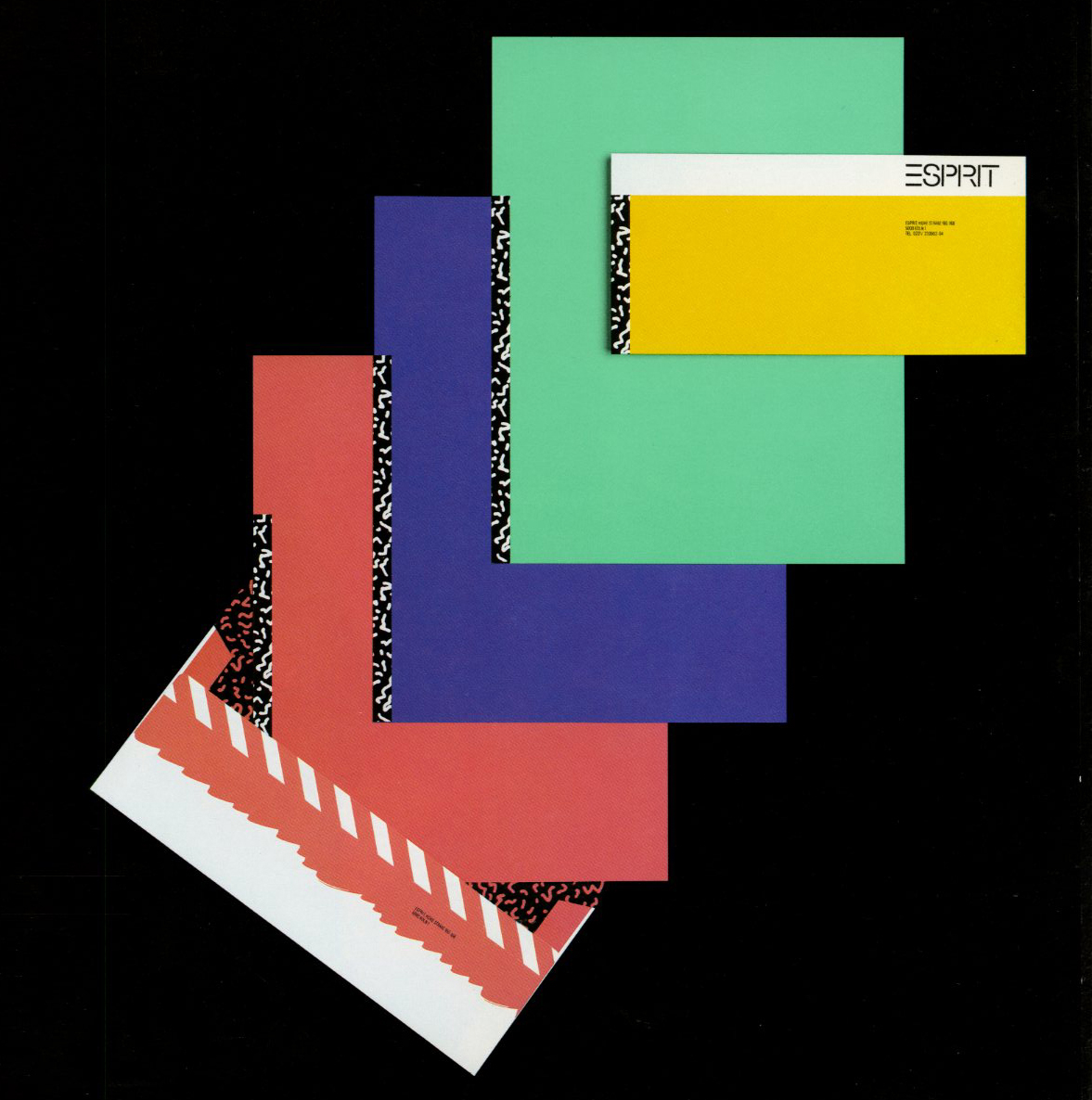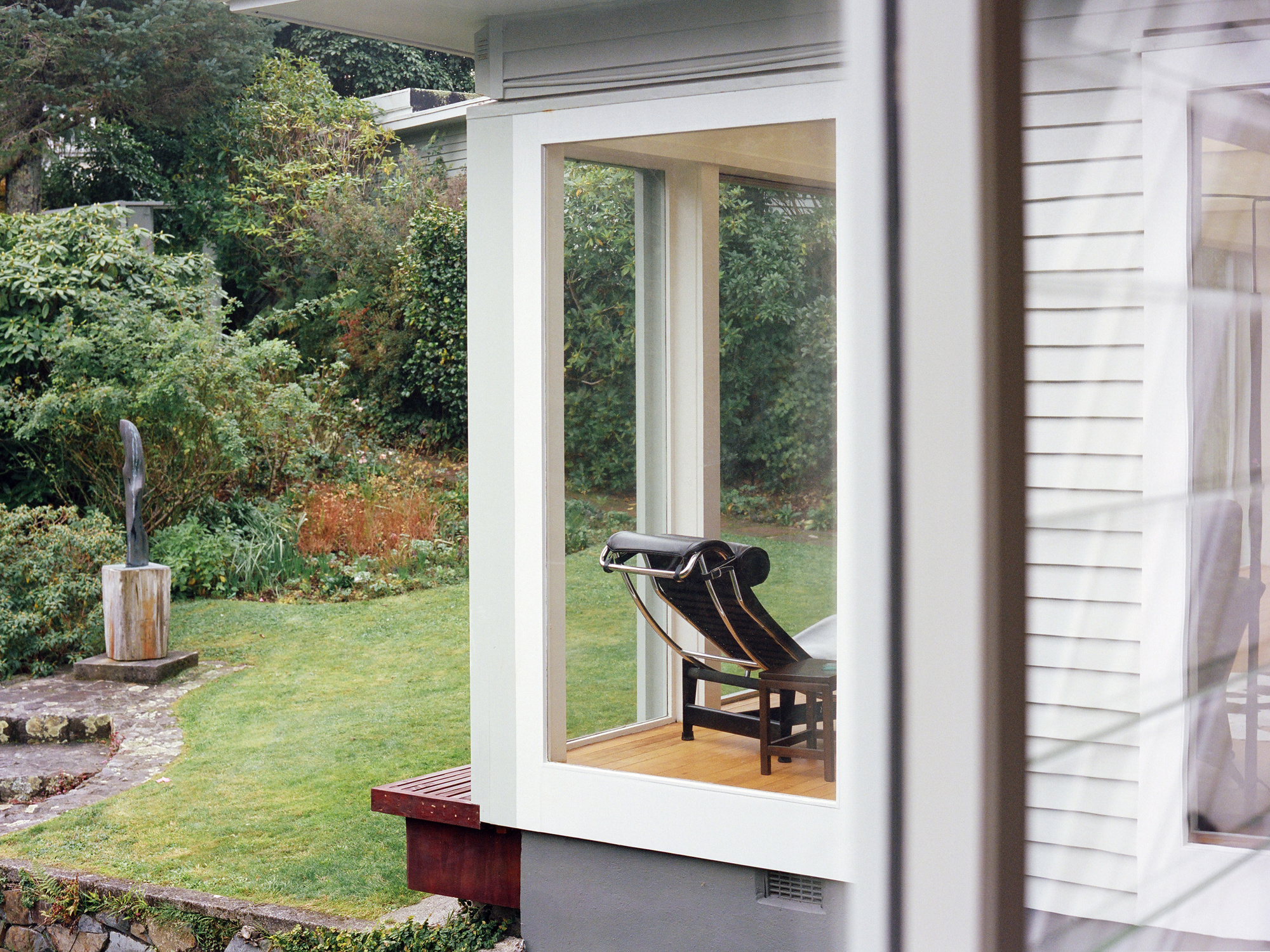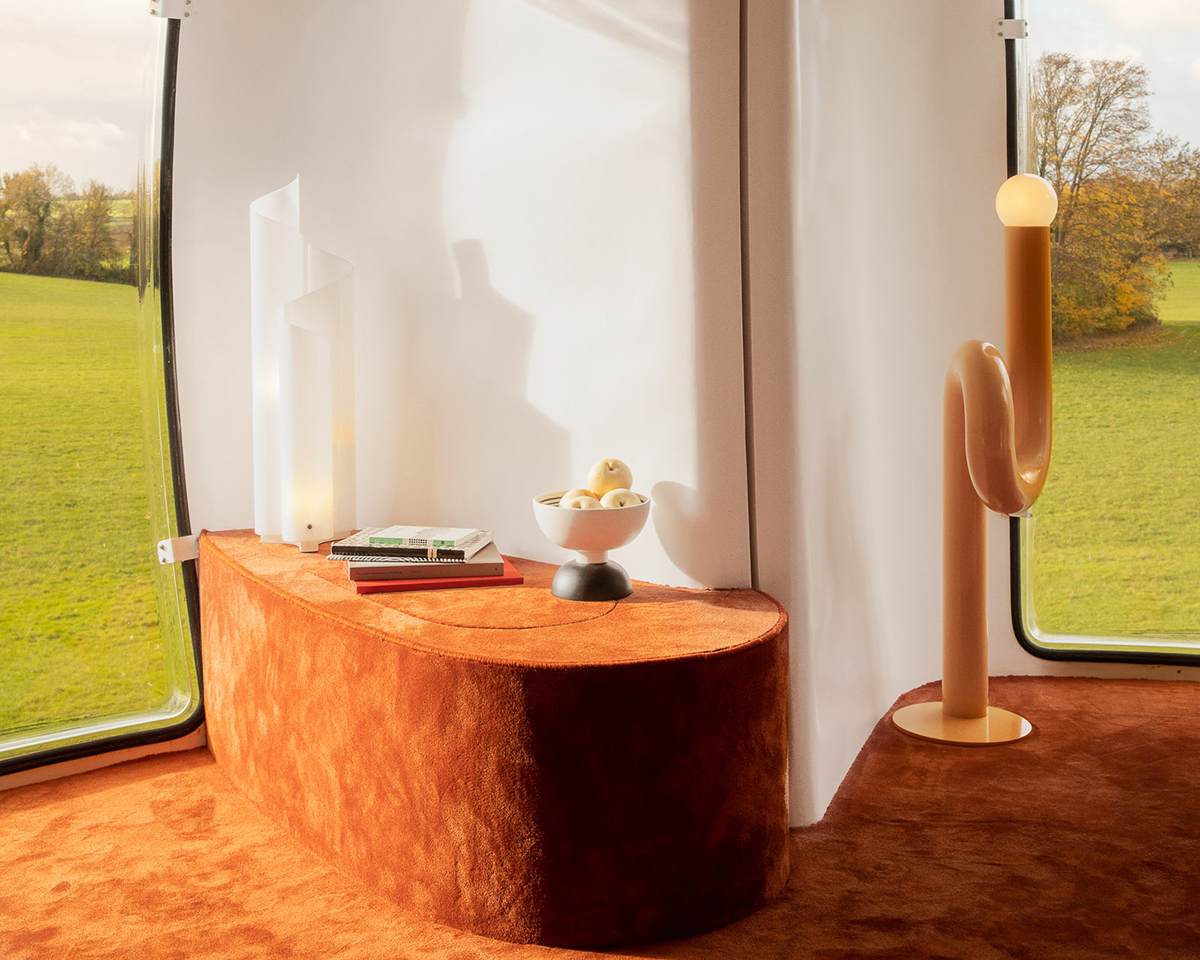
05.03.23
Interiors
This Prefab Bubble House in the French Countryside is Giving Elevated Airplane Interior
Inspired by natural forms — eggs, fruits, air bubbles — Jean-Benjamin Maneval’s design for Maison Belle omits any straight lines. The same went for the interiors, spearheaded by creative studio KIF and Dorothée Meilichzon of CHZON. Working within the curved shells was complicated and everything had to be made completely bespoke, made to measure inch by inch. The design is a tribute to the late ’60s when Maneval bubble houses were produced. “It’s an era of boldness and fun,” says Meilichzon. “Lush carpets, patterns, organic shapes, bold colors.”
